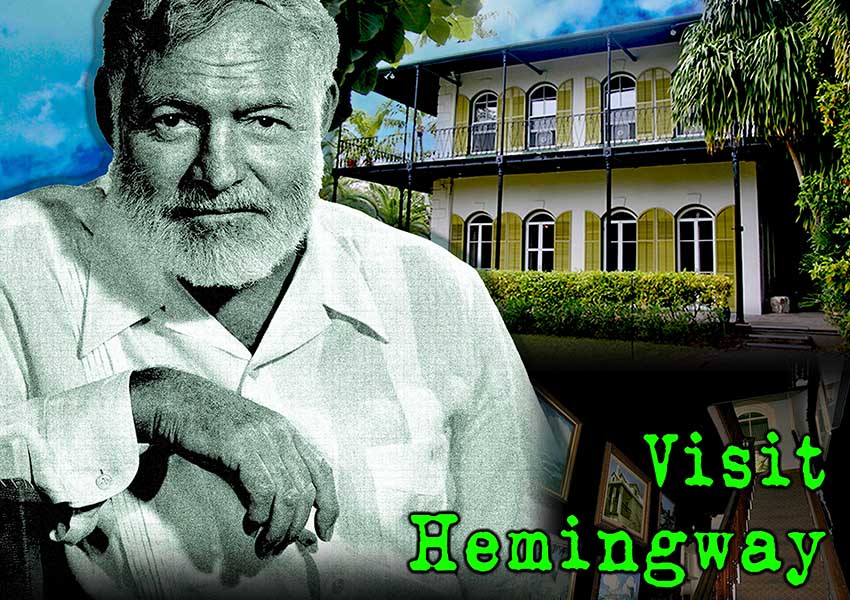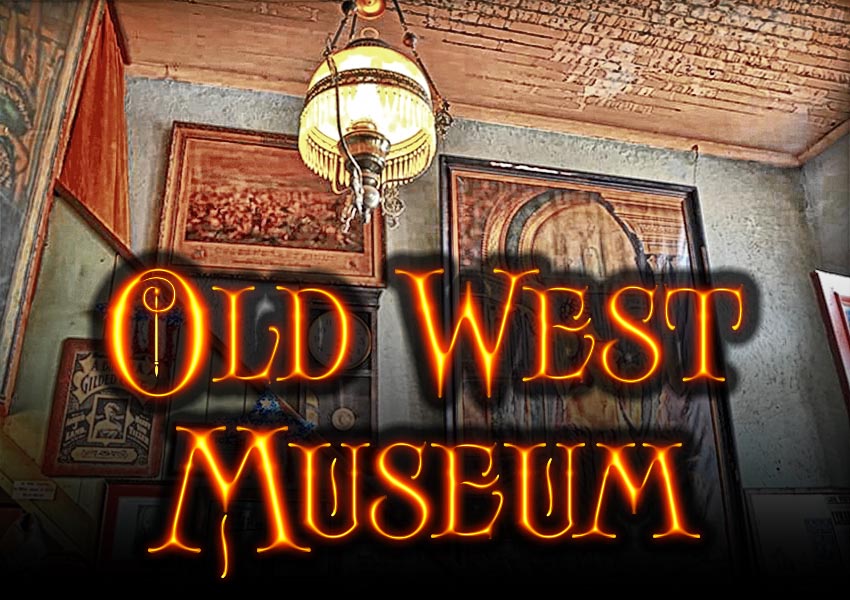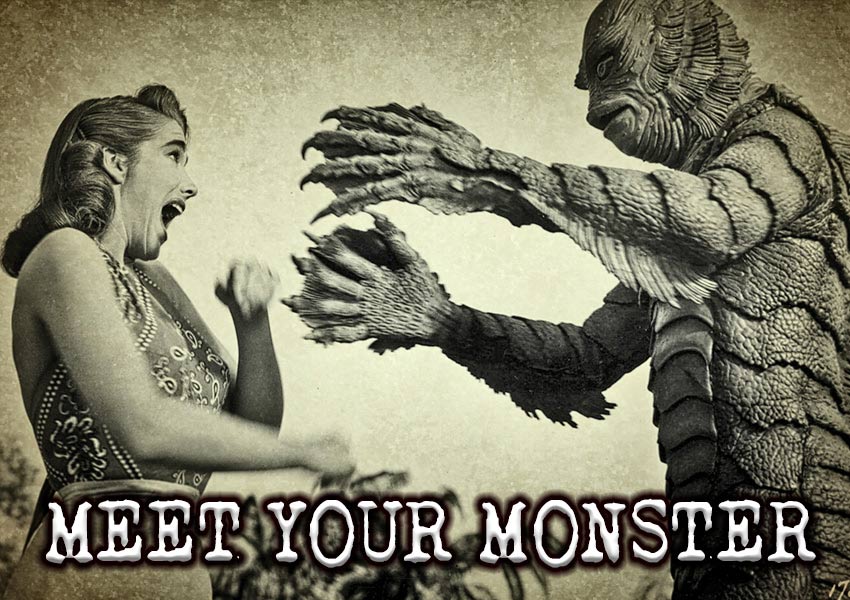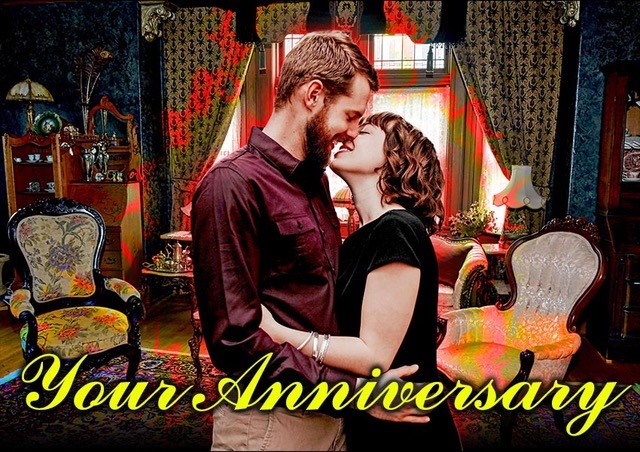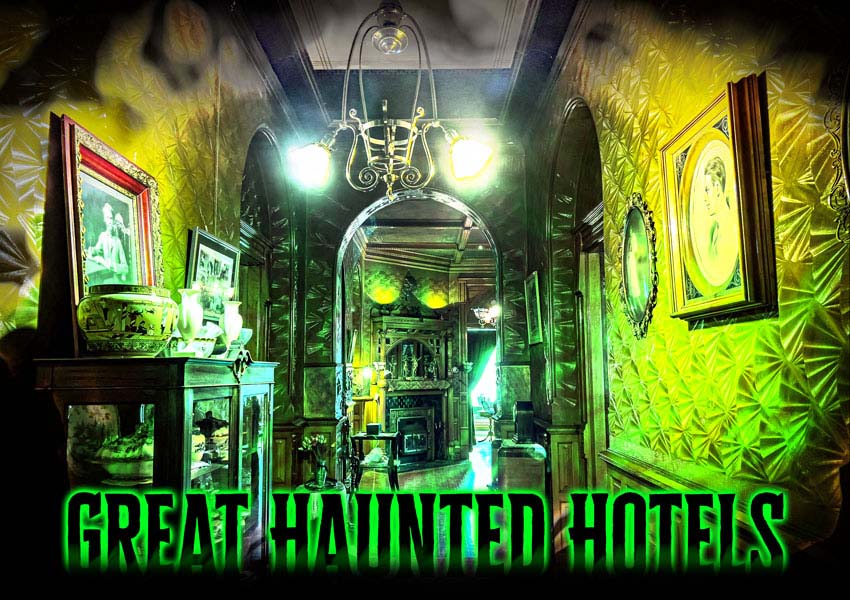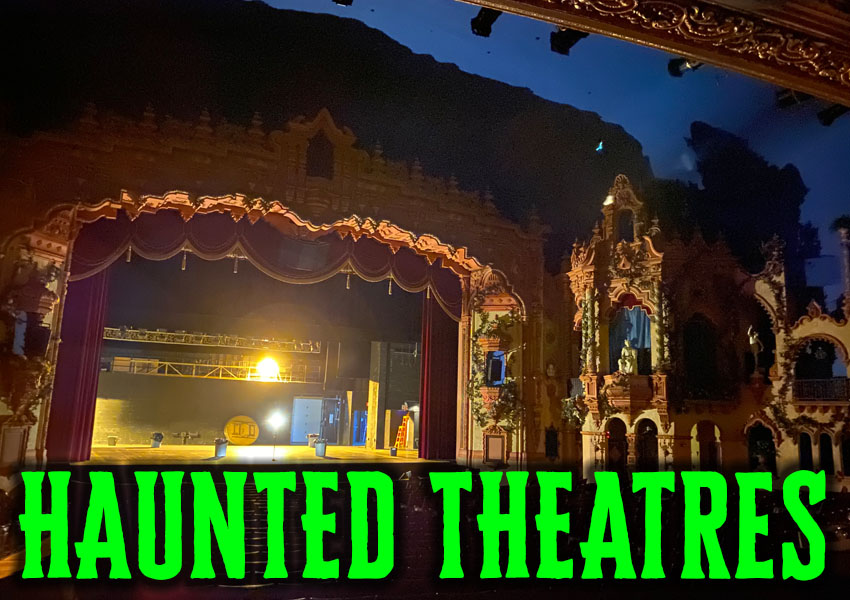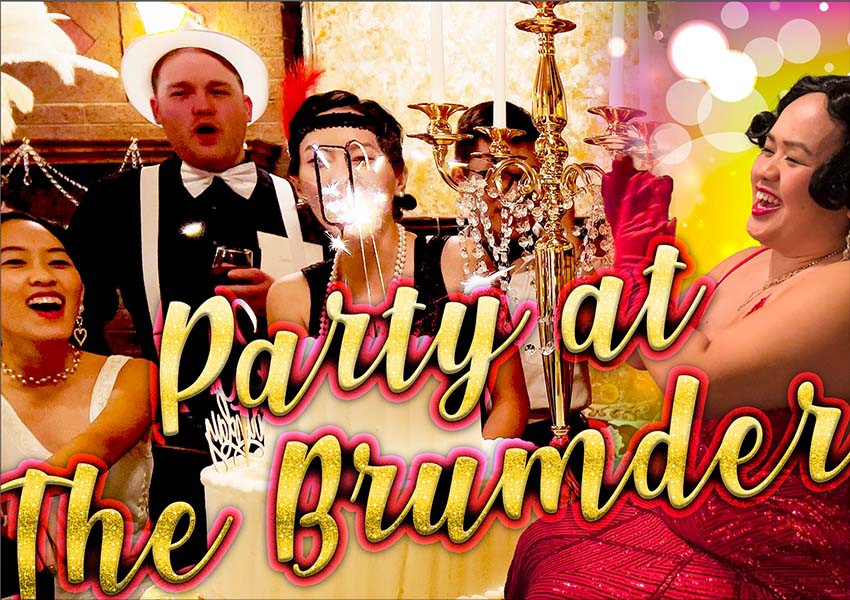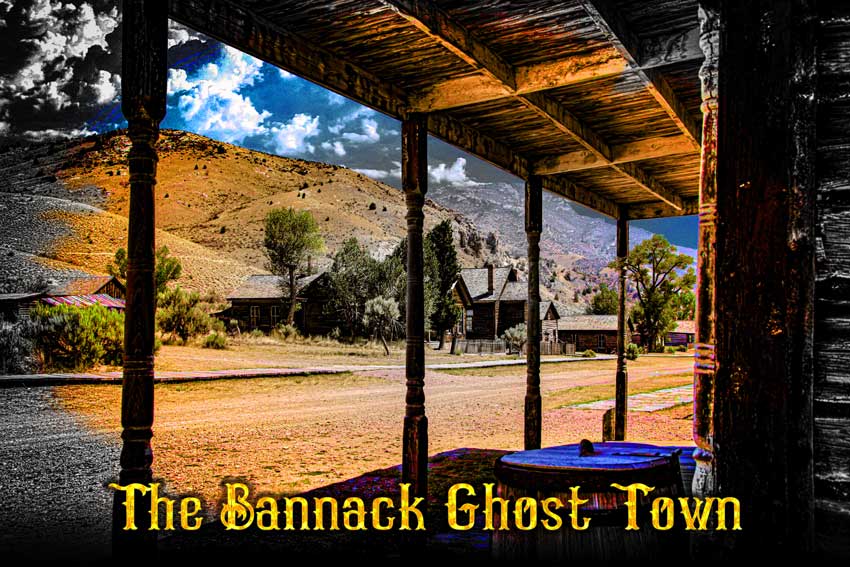San Francisco California
Alcatraz Prison National Park
This once historical place of spirituality
and healing years ago changed for the worst.
It became a place for punishment for
years, causing unhappy hauntings.

DESCRIPTION
Alcatraz Prison Museum National Park’s main attraction is the Alcatraz Federal Penitentiary Museum, also known as “The Rock”. It once was an American Federal Prison, built of reinforced concrete, and designed to be a maximum security facility, with minimal privileges for prisoners; a “place of penitence”, modeled after the old Quaker concept used in early American prisons.
This philosophy had in the past created awful consequences for the inmates: insanity and death. However, the need to control these scary human beings was great, so this philosophy was resurrected. It was a stark place of incarceration for those 300 civilian prisoners deemed to be the worst risk for violence, trouble and escape in the United States Federal Penitentiary inmate population.
In the beginning years of the prison, no talking among inmates was allowed except for three minutes during morning and afternoon recreation periods and for two hours on the weekends. Breaking this rule sent the offender to one of the discipline cells, depending on how severe the violation was. Al Capone had a hard time with this regulation.
Alcatraz was like a small city, and had all the services needed for prison life. There was a hospital, mental ward, dining hall, work factory, laundry, kitchen, library, showers, visiting room, outside recreation area, etc.
The inmates were watched and supervised very closely under strict rules. There was one guard to three inmate ratio, which means the guards knew their charges well. One man in one cell was the sleeping arrangement. The daily routine was unchanging and every minute was accounted for during the day. “Federal inmates are required to work, unless they are medically unable to, or are violent or disruptive. At Alcatraz, work included factory work, laundry, general prison maintenance, and food preparation.”
Though inmates were more closely supervised and controlled than those at any other federal prison, Alcatraz did begin gradually to offer an array of work, education, reading materials and recreation programs for those who did their time, followed the rules and made no trouble. The prison library had over 115,000 books and many magazines. Cells were wired with earphones so inmates could listen to warden-approved radio stations during the 1940s. Al Capone learned the banjo and George “Machine Gun” Kelly also learned an instrument; and they played together in a little band.
Cells on the first floor along the major corridor that led to various parts of the prison was called “Broadway”, because of the foot traffic and lack of privacy; usually housing new prisoners for their first year. They could be studied and watched closely to see if they had any issues that would prevent them from working well or being with other inmates.
Efforts to provide good food and good medical care were considered to be rights not privileges for the inmates who basically behaved. Cell blocks A, B, and C, and Broadway housed prisoners who could go along with the program. Clothing, a private 4 x 8 cell with along with a single bed, a toilet, a sink and a desk, being able to take a shower once a week were also rights. With all the tight controls, trouble was kept at a minimum.
Cell Block D was reserved for the most dangerous and hard to handle prisoners, who were locked up for 23 out of 24 hours. Cell Block D was also the home to all the disciplinary cells of punishment. There were some men incarcerated here on Cell Block D with mental illness, bad attitudes, violent tendencies, and issues with self-control that got them in conflict with the strict regimentation of prison life. Mentally ill prisoners who couldn’t adjust to prison routine and were a danger to themselves and others were often moved to cells in the hospital mental ward, when there was a vacancy.
The right to clothing and regular full meals were taken away if the prisoner committed a minor violation; winding up in a pitch-black, cold disciplinary Cell Block D “Strip Cell”; kept in isolation for a one to two day stay; sleeping on a straw mattress that was taken away during the day, and eating just bread and water.
More severe punishment were given for major violations. Such violators experienced a stay in one of the four Cell Block D “Hole Cells” for periods of up to 19 days, with just a low wattage bulb hanging from the ceiling for light and a toilet. For those guilty of a major offense, a stay here often included a beat-down by the guards for those guilty of a major offense. The screams of beaten prisoners were heard by everyone on D and C block. They in turn made noises, like banging on their bars, that so other prisoners knew what was happening.
In “The Hole”, the food pattern was this; during the first two days inmate offenders received just 2 cups of water and a minimal amount of bread. The third day they received full meals. This continued until they were put back into their regular cell. This experience could push inmates with borderline mental illness over the edge. They came out of the cells senseless, insane. After long stays in these cells inmates often suffered from pneumonia and/or arthritis; winding up in the prison hospital.
The worst place of punishment, which was rarely occupied, was in the “Dungeon Cells,” which used to be the old army disciplinary barracks, underneath the prison. It was said that naked prisoners were chained to the wall for 12 hours, and given only a blanket to sleep on. In 1942, the Supreme Court ruled that the Dungeon Cells were cruel and unusual punishment and their use was discontinued.
The average stay here for an inmate was three to five years. Some spent more time, like bank robber Alan Karpis who did 27 years hard time. He was paroled in 1969, and became an author at the age of 62.
Robert Stroud, a brilliant man with serious issues who had suffered terrible abuse as a child, spent 17 of his 54 years in prison at Alcatraz. Though well respected in the aviary community for his research and medicinal discoveries for curing canary disease at Leavenworth Prison, could not keep birds at Alcatraz, so he wrote some impressive books, instead, putting his 134 IQ to good use. He spent seven years on D Cell Block, and ten years in the Alcatraz hospital ward. He was transferred there because he liked to grab people through the bars. He was classified as an “aggressive” homosexual and would attack others if left alone with them. He was eventually transferred to a mental health prison ward state-side where he died of natural causes in his late seventies.
However, despite the minimal rates of discord, compared to other places of incarceration both guards and inmates of Alcatraz were killed at the hands of other inmates, or killed by authorities during escape attempts; though not at the levels of other places of incarceration. There were also 5 suicides.
Tourists have long been fascinated with Alcatraz. Even when the prison was operational, tour boats would go around the island so people could see the outside of the prison. Now that it is a museum, people still are fascinated with it, and the tour tickets have to be bought in advance of their scheduled visit.
Besides being able to take tours of the old prison buildings, there are some fascinating exhibits in the museum that feature the extensive collections from Alcatraz Island, including “objects made by notorious inmates, historic photographs and documents, escape materials and inmate artwork; items used by officers including correctional materials when Alcatraz was a federal penitentiary from 1934-1963; military prison period materials from 1859-1934; and the American Indian occupation of 1969 -1971.”
Among the exhibits, there are multi-media presentations that give the visitor a virtual tour of the prison, slide shows, sound clips, and close-ups of infamous prisoners such as Al Capone and Robert Stroud, the “Birdman of Alcatraz”, both who wound up in the hospital mental ward.
Also found on the island are lots of birds, tide pools, and glorious views of the San Francisco shoreline.
You can plan a trip to the Alcatraz Prison Museum and see other points of interest that can be found on this infamous island by going on line and buying tickets in advance. Reservations are a must, as tours sell out several weeks in advance, especially during the summer months. You can also call 415-981-ROCK (7625) or e-mail them.

HISTORY
Alcatraz Island started off as a place for the local OHIONE Indians to harvest bird eggs, and abalones in the tide pools; as well as being a safe haven from storms for many years. The island was at one time a place of spirituality and healing.
It became necessary at some point for the Indian people to banish their bad ones to this island. These criminals probably were buried here as well. The positive feelings of the place left and were replaced with a sense of evil and negativity. Death seldom leaves nasty people with any new endearing values; they are as they were while alive with the same personality, negativity, hatred and weaknesses (Ham House)
In 1775, the Spanish explorers landed here and called it “La Isla de los Alcatraces”, which means “Island of Pelicans.” Heeding the Indians’ warning that the island was evil, they didn’t build anything there; neither did the Mexican government.

In 1847, the United States Military, which didn’t listen to the warning, took over the island from the Mexican government, during the Mexican American War. In 1853, the foundations for a military fort were begun. In 1854, the U.S. government built a lighthouse to guide ships away from the rocks and safely through the Golden Gate. In 1859, the Federal Government established an U.S. Army fort to guard San Francisco, perhaps seeing the writing on the wall of the upcoming Civil War, as well as to protect the gold from the California Gold Rush that was shipped by boat out of San Francisco Bay.
As the water is very cold and the currents are very strong, the U.S. Army realized what the Indians had realized; that the island would be a great place for isolated punishment: establishing a disciplinary barracks. Within the fort, buildings were used to hold Confederate sympathizers, army deserters and soldiers who were deemed to be insubordinate. Many were kept at first in dire conditions; in the dark, damp, crowded basement of the guard house. Disease killed many.
In 1868, a stationary, austere military prison was firmly established. More buildings and cell houses were added, and prisoners no longer had to stay in the basement of the guard house. During the 1870s and 1880s, uncooperative Indian Chiefs and tribal leaders were imprisoned here among the hardened group of military inmates. In 1895, nineteen members of the Hopi Tribe were imprisoned by the U.S. Army for resisting policies to “Americanize” their children. In 1898, Spanish P.O.W’s from the Philippines were held here until the end of the Spanish American War.
Around 1900, Alcatraz Island also became a health resort for soldiers returning with tropical diseases from Spanish American War fronts in Cuba and the Philippines. To make room for the ill, inmates were given pardons to ease the overcrowding.
In 1904, since the buildings were beginning to fall apart, prison crews began to build new ones and update the existing facility. By 1909, the U.S. Army had torn down all of the old fort buildings. The Army had an established base in San Francisco, and a fort was no longer needed on Alcatraz. In its place, the Army completed a reinforced concrete prison for soldiers convicted in military court. It was called The United States Disciplinary Barracks, and was a minimum security prison, through strict. On the old parade grounds, apartments for the guards and their families were built. The lighthouse keeper’s mansion became the home of the commander in charge of the prison.
In 1934, it became too expensive to keep the Disciplinary Barracks open, so it was turned over to the Federal Bureau of Prisons, which needed a secure place to keep the roughest, most dangerous men, the gifted escape-artists and the most hard to handle incarcerated guests of the Federal Government.
The barracks underwent some much needed renovations and improvements that turned it into a maximum security penitentiary, for 300 of the worst inmates in the federal system. Inmate residents included such men as Robert Stroud; “The Bird Man of Alcatraz”, a brilliant but homicidal sociopath who truly had a Dr. Jeckyl and Mr. Hide personality.
At Leavenworth Prison where he was first sentenced, Robert was allowed to have birds in his cell. He found three baby canaries, raised them, and started a breeding program. He had so many birds that they took up two cells. He did research, and discovered cures for canary diseases, and wrote books on the subject. Despite his mental, criminal and behavioral issues, Robert made huge contributions to the bird world. When he killed a man in a psychotic rage, Robert was sent to Alcatraz where he wasn’t allowed to have birds; though the film about him that starred Burt Lancaster depicted the character as having birds in his cell.
Notorious criminals and gangsters and their mob soldiers were incarcerated 1920s and 1930s. The Federal Government was eager to show the American people that they were serious about hard time for infamous criminals.
Besides ruthless, brutal Chicago kingpin Al Capone, there was kidnapper George “Machine Gun” Kelly, Doc Barker; the last member of the Ma Barker gang, bank robber Floyd Hamilton; a cohort of and driver for Bonnie and Clyde, bank robber Alan Karpis (who taught Charles Manson how to play the guitar), train robber Roy Gardner, the godfather of Harlem, “Bumpy” Johnson, and Morton Sobell, who was convicted of espionage in the Rosenburg Treason Court Case. Ruthless killers who didn’t get the chair, including mob soldiers, were also among this prison population. Needless to say, they were scary people you wouldn’t want to meet in a dark alley.
From Alcatraz’s opening in 1934, to 1963, when Alcatraz closed, 1500 men had spent time here over these years. Fifteen died of natural causes, five killed themselves, others were violently killed by other inmates, and some were shot by guards when they tried to escape. Eight guards were killed by inmates as well in violent ways.
HISTORY OF MANIFESTATIONS
There is a very long history of paranormal activity here, starting when the banished Indian criminals had died and were buried on the island. Negativity and oppressive evil began, and just grew over the years. Because of the deaths of Civil War prisoners, sick Army soldiers, Army prisoners and the prisoners and guards at Alcatraz, many spirits seem to be stuck here or just don’t want to leave just yet. Even spirits that didn’t die here but served time or worked at Alcatraz are back in their old cells or stomping grounds.
When graves are disturbed, built upon or moved, the spirits of the people who are buried are either not happy, confused, or even angry about it.
The graves of Indians, and people who died during the Civil War days have been moved or built upon in order to build the The United States Disciplinary Barracks and probably the Alcatraz Prison and buildings as well.
People who suffer from a broken spirit, or a broken mind, sometimes have a hard time letting go of this world. Difficult inmates wound up in the cells of harsh punishment;(Strip Cells and The Holes and The Dungeon Cells) which added stress to their own mental issues. Some men were broken and became insane; choosing to come back to Alcatraz when they enter the spirit world.
Al Capone slowly became insane because of syphilis, and not being able to manipulate the people of authority around him.
Robert Stroud, despite his brilliant mind, had anger and mental issues, was an aggressive homosexual and considered to be a homicidal sociopath and a psychopath.
Harry Brunette was an unstable character as well.
Prisons and Penitentiaries have since the beginning of humankind been a place where people have died from natural causes, abuse, accidents, suicide and at the hands of another. Guards and inmates of jails and prisons that die before their time while there, sometimes continue on either in their job or in their confinement.
Despite the very controlled environment and all the best efforts of the authorities of Alcatraz to control the violent ones, keep everyone occupied in work and areas for positive use of their time; reading, music, and providing the best meals that they could etc. there were guards and prisoners who died in acts of violence.
Inmates were killed by others:
A mob soldier call “the Butcher” was killed in the laundry room during a work session; perhaps as a revenge killing for his former violent behavior, acting as a hit man. Perhaps he inadvertently enraged his killer, who perhaps had anger issues.
An inmate that was placed in one of the Hole Cells was strangled to death by either a guard or an evil entity with red eyes.
In the barber shop, an inmate was getting a haircut from another inmate barber, who happened to be his lover. The barber killed the inmate with the scissors.
Some of the escape attempts at Alcatraz Prison took lives: Both guards and escapees
There were 14 separate escape attempts involving 36 inmates. Of those, 23 were recaptured, 7 shot and killed as they fled, and at least 3 drowned. Five inmates involved two separate escape attempts, two men in 1937, and three men in 1962, remain unaccounted-for. New evidence raises the possibility that the three men in 1962’s escape made it to shore and went to Brazil.
In 1938, three inmates killed Officer Roy Cline with a hammer in the factory. One escapee was shot dead and the other two were caught before they could escape.
In 1946, during a bloody blast out attempt at the prison, both guards and prisoners died. It started when 6 inmates overpowered an officer and stole his keys. While they could get into the gun alley, none of the keys would let them out the doors leading to the outside. This began a two day gun battle between six inmates; trying to fight their way out, and prison guards. United States Marines were called in to help the guards defeat them.
Some inmates still in their cells along the main Broadway section were inadvertently killed: collateral damage.
Two of the escapee combatants’ hostages, Officers Harold Stites and William Miller, were shot to death in a cell by one of the escaped inmates. Three inmates were killed during the siege. The three recaptured inmates were tried for murder. Two were executed and one sentenced to 99 years in prison.
In the other attempted escapes:
Escapees were shot by guards, or drowned in the cold water surrounding Alcatraz if they made it to the water with their rafts. One escapee was quite an athlete and swam all the way to shore, where he fell asleep; exhausted. Police found him sleeping and he was re-arrested.
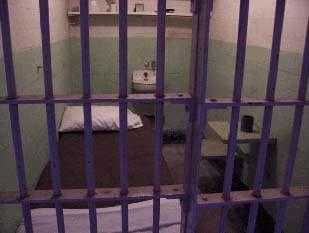
Why would these men as spirits want to stick around such a harsh place?
People who suffer violent deaths sometimes can’t let go of this experience, wanting justice, or try to prevent their death but can’t; just relive it, or just want to stay in this world and continue in their old life, even as an inmate as best they can.
Entities of soldiers or prisoners who had died at the old army prison or fort have long made their presences known.
Inmates who died in the disciplinary cells under the harsh conditions, or violently at the hands of others still are at Alcatraz.
Officers, people in charge and leaders who die on the job want to continue in their work; not let the fact that they were killed or died get in the way. Guards are still on the job; probably those killed during the escape attempts.
Sometimes people who die as a result of what they did while alive are afraid to cross over and be punished again for what they did in this world. Or, they can’t forgive themselves and deeply regret what they did and may be mad at themselves.
Entity in the basement dungeon – communicated his guilt of what he had done to a paranormal investigator, as the reason why he was still there.
Entity of Butcher – Told Sylvia that he didn’t believe her when she told him that he could receive love and forgiveness on the other side.
MANIFESTATIONS
The joint is jumping with restless spirits, making Alcatraz a most popular place to investigate.
The living can experience the full paranormal package in all its various places and buildings.
Spirits from Early History
When the prison was open, guards and inmates saw and heard paranormal entities from the former fort and army prison, and perhaps a cranky negative Native American spirit as well, wanting to do damage.
All the cell blocks and areas of the prison are haunted by former prisoners.
Visitors and rangers have experienced cold spots, shadow figures, clear apparitions and cell doors that slam shut all by themselves; probably by phantom guards still on duty. Shadows are seen walking on the catwalk in the service area behind the cells…
Some escapees reached the outside by digging holes to this area and climbing out to the top of the building. Some were shot. Perhaps they re-stage their escape, trying to see where they went wrong.
In the hospital ward, the apparition of Robert Stroud have been seen in his cell there. He enjoys walking through the wall, perhaps on his way to the library to work on his books.
D Cell Block
People feel cold spots in cells, and uneasy feelings due to the boatload of negative energy.
People have been touched, grabbed by the back of the neck, with entities whispering disturbing things in their ears.
Cells 11, 12, 13 and 14 D were the Hole Cells, and all are haunted by disturbed souls.
14 D was the home of proven, crazed killer Rufe McCain, who was so volatile that he kept there for three years straight. The negative energy is so thick in this cell, that people have really been affected by it.
This cell may have drawn in the evil red-eyed Native American spirit, a tormentor and possible killer of men who had to stay there, and has been experienced by paranormal investigators as well.
An inmate was found strangled in D Cell 14. He had yelled to the guard to get him out because of the red eyed entity in the cell with him.
The Spirit of Al Capone
Al Capone was going slowly mad due to venereal disease and his experiences at Alcatraz.
Toward the end of his 4 1/2 year stint, they let him stay in the shower room and play his banjo during recreation time because he feared for his life. People have heard him playing his banjo in the shower.
He happily volunteered to be tour guide for medium Amy of The Dead Files, calling himself Stan.
When she asked him why he was here, he replied, “This is my hell.”
Auditory and Tactile Experiences
The living hear moans, agonized cries, screaming and chains rattling in cell blocks A, B, and especially C.
Perhaps the reliving the experiences of becoming collateral damage during the prison breakout battle is the source some of the disturbances…
Prisoners in C Block used to rattle their chains and yell when someone was being beaten up by guards.
Perhaps some of the screams are coming from the punishment cells on Cell Block D, during the beat-downs of prisoners.
The warden, Mr. Johnson, heard a woman crying hysterically; perhaps the wife of a guard who was killed here.
People have been touched, grabbed by the back of the neck.
Seeing Spirits by the Living
Park service called in medium Sylvia Brown because the disturbances in Cell Block C were so active and intense.
Entity of Able Maldonowitz, a disturbed, violent soul who earned his nickname; Butcher, because he was a cold-hearted hitman for the mob.
Butcher was killed by another inmate in the laundry area of Cell Block C. He isn’t happy about that and lets people know his feelings, and was one of the causes of all the activity experienced there.
Dungeon Area
The Entity of Harry Burnette has been caught on EVPs by investigators. He told them his name. Perhaps he followed them down.
An unsavory male spirit took a liking to a female Ghost Lab investigator and followed her around the prison. “I want you!” Perhaps he was a former army prisoner, who was not known for his sexual or impulse restraint.
A repentant, guilt-ridden entity fretted in an EVP. The female investigator asked, “Why are you still here? ” The entity told her that he couldn’t forgive himself for what he had done in this world.
PARANORMAL FINDINGS
Besides tourists, paranormal investigators and psychic mediums are drawn to Alcatraz because of all the paranormal activity, and have captured a boatload of EVPs and other hard evidence. Probably, the spirits want to make up for all the times they couldn’t talk, and they can express their feelings, tell their stories, and get some chuckles at the expense of the living. Some enjoy scaring the living, talk menacingly but never following through with the action. The evil red-eyed creature hasn’t been given much opportunity to do harm to people.
Most of the popular paranormal television shows have investigated Alcatraz, and caught hard evidence that backs up the personal experiences reported as well as gathering new evidence:
Psychic Research
Many psychic mediums have visited the spirits here and talked to them; perhaps offering them counseling and comfort.
The park system authorities brought in a medium, Sylvia Brown, along with an ex-convict of Alcatraz; named Leon, and a CBS news team to record their findings. The laundry room gave off impressions of violence to Sylvia and she encountered an unseen presence there, and described him as being tall, having a bald head and little eyes. Leon identified the presence as a prisoner, known as “Butcher,” who had been a hit man for the mob, who had been murdered in the laundry room.
Sylvia decided to try to free Butcher so he could go to the other side. During a seance in the prison dining room, it was communicated to Butcher, through Sylvia’s Spirit Guide, Francine, that there were others on the other side that would be able to help him, and that he should follow Francine to the other side. Butcher flatly refused to believe anyone would help him and chose to stay in the prison, still incarcerated though long dead. Some day, Sylvia hopes to come back and try again to set Butcher free through another seance.
STILL HAUNTED?
The spirits of Indian criminals, Civil War prisoners, army prisoners, sick soldiers, some inmates who did time and guards who worked at Alcatraz; especially those who died there, all keep the living company. They stay for a variety of reasons, get their chuckles providing the full paranormal package for those who come to see them and discover how and where they lived.
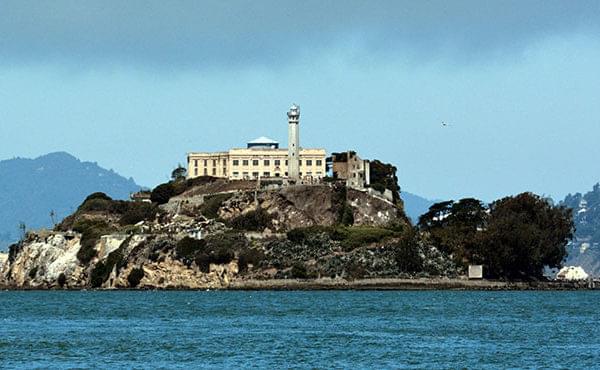
LOCATION
Alcatraz Prison Museum National Park
San Francisco, California
(415) 546-9400
Alcatraz Prison Museum National Park is located on Alcatraz Island, in the middle San Francisco Bay, right next to Angel Island.
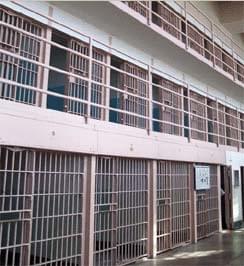
SOURCES INCLUDE
- The Ghost Hunter’s Field Guide
by Rich Newman
Llewellyn Productions
2010 - Haunted Places: The National Directory
by Dennis William Hauck
Penguin Books
2002 - Discovery Travel Adventures
San Francisco section
by Christian Kinney
Laura Forman Editor
John Gattuso Series Editor
Discovery Communications, Inc.
1999
(Digital copy unavailable) - In the Realm of Ghosts and Hauntings
by E. Randall Floyd
Harbor Publishing
September 2002 - Ghostly Alcatraz Island (Horrorscapes)
by Stephen Person
Bearport Publishing
August 2010 - Prairie Ghosts.com — America’s Most Haunted Places — Doing Time for Eternity on “The Rock” — The Hauntings on Alcatraz
- YouTube Video: Ghost Lab — Season 1, Episode 10 — video no longer available
- YouTube Video: The Dead Files — video no longer available
- YouTube Video: The Ghosts of Alcatraz Penitentiary with Planet Paranormal
Uploaded November 12, 2010 by Bob Davis - YouTube Video: Alcatraz Island The Escape — True Scary Ghost Stories Part 4
Uploaded July 10, 2015 by DorsetGhost - DailyMotion: Ghost Adventures — Season 8, Episode 8
- Photographs © Aaron Roper
Our Haunted Paranormal Stories are Written by Julie Carr
Your Paranormal Road Trip

